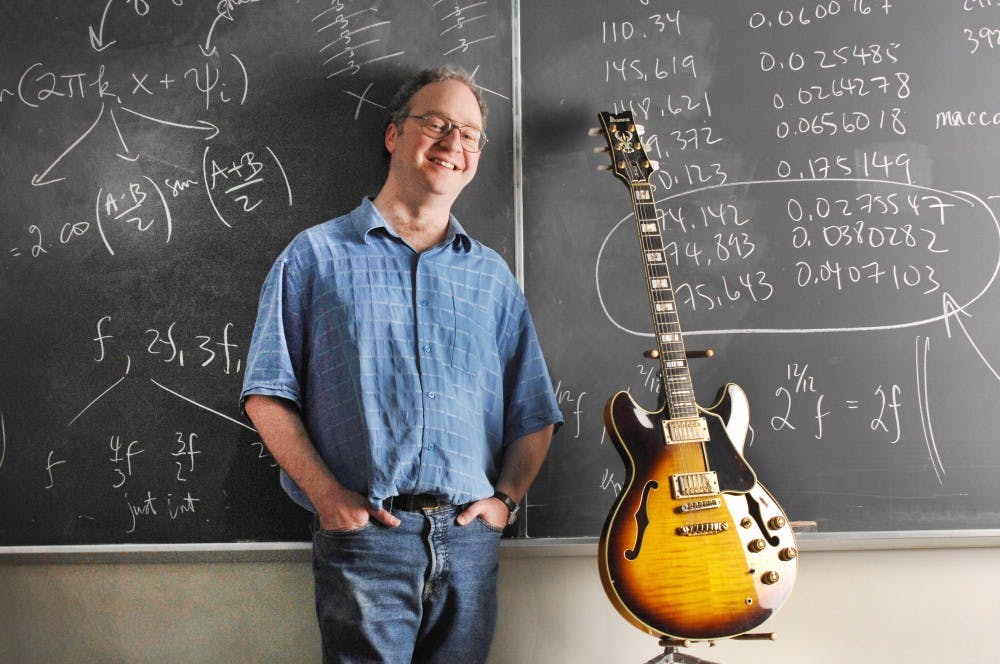When you hear the words “music” and “math,” you may not think there’s much correlation between these seemingly contrasting subjects.
Jason Brown, however, would beg to differ.
Brown, a mathematics professor at Dalhousie University in Nova Scotia, will be giving a lecture at 4:10 p.m. today in C304 Wells Hall, titled “A Hard Day’s Math: The Connections Between Mathematics and Music.”
The lecture’s title, inspired by the legendary opening chord of the Beatles’ 1964 hit song “A Hard Day’s Night,” stems from a sudden realization Brown had while thinking about the song in 2004, on the song’s 40th anniversary.
Brown said the opening chord of the song was something people had tried to play for years, but never “quite got it right.”
“Everyone had their own idea of what the notes were and I thought back then, ‘Maybe there’s a scientific way to approach it,’” Brown said.
Brown, who taught himself to play guitar at the age of 12 by learning the songs on Beatles records, said when thinking about the song, he remembered a chapter in an undergrad book he had read on the sounds of mathematics.
He has since used something called a Fourier transform, which is a part of calculus, to “unravel that mysterious open chord.”
Brown has written a number of papers on the connection between mathematics and music.
“I think on one level you can use mathematics to understand the physics behind sound in music and to see the frequencies of the notes that are played in chords. On the other hand, I’ve also written about how mathematical patterns infuse the best song writing,” he said.
“In particular, what is amazing is the level to which songs of the Beatles incorporate patterns in their music, the kind of patterns that people will want to listen to over and over again throughout the years, and I think that’s part of their legacy.”
Brown said none of the Beatles were particularly good at mathematics throughout their scholastic careers, but this mathematical ability is displayed through the music more on a subconscious level.
“You don’t have to be good at school mathematics to have an inherent mathematical sensibility,” Brown said.







